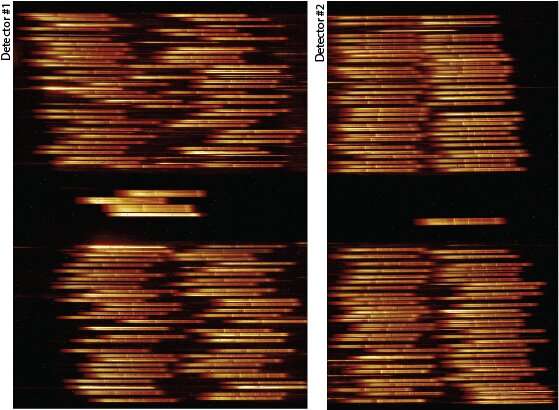Three of the four instruments on NASA's Webb telescope ready for science

Three of the four science instruments on NASA's James Webb Space Telescope have completed their commissioning activities and are ready for science.
Each of Webb's instruments has multiple modes of operation, which need to be tested, calibrated, and ultimately verified before they can begin to conduct science. The latest instrument to complete this process, the Near-Infrared Spectrograph, or NIRSpec, has four key modes the team officially confirmed as ready to go.
"We made it: NIRSpec is ready for science! This is an amazing moment, the result of the hard work of so many JWST and NIRSpec people and teams over more than two decades. I am just so proud of everyone," said Pierre Ferruit, Webb project scientist with ESA (European Space Agency) and principal investigator for NIRSpec. "Now is time for science, and I am eager to see the first scientific results coming from NIRSpec observations. I have no doubt they will be fantastic. Big thanks to all who made this possible across the years—great job!"
The final mode verified for NIRSpec was the multi-object spectroscopy mode, a key capability that allows Webb to capture spectra, or rainbows of infrared light, from hundreds of different cosmic targets at once. In multi-object spectroscopy mode, NIRSpec can individually open and close about 250,000 small shutters, all just the width of a human hair, to view some portions of the sky while blocking others. By controlling this "microshutter array," Webb can observe multiple specific targets while reducing interference from others.
The confirmation of NIRSpec's multi-object spectroscopy mode marks the first time this capability has been verified for use from space. It will allow NIRSpec to characterize everything from the faintest objects in the universe to the formation of galaxies and star clusters.
NIRSpec was built for ESA by a consortium of European companies led by Airbus Defense and Space, with NASA's Goddard Space Flight Center in Greenbelt, Maryland, providing its detector and microshutter subsystems.
Out of 17 total instrument modes across Webb's four instruments, only one mode remains to be verified, for the Near-Infrared Camera (NIRCam). When the team confirms this remaining mode, the months-long process of preparing Webb for science will formally be complete.
Webb's commissioning process culminates on July 12, with the release of the telescope's first full-color images and spectroscopic data, and the official beginning of its science mission.
Provided by NASA


















